Expert's Rating
Pros
- Good overall performance
- DRAM for fast random ops
- Nice-looking heat spreader
- Available with beefier heatsink
Cons
- A tad off the PCIe 5.0/DRAM pace
- On the pricey side
Our Verdict
The Lexar NM1090 Pro was slightly off the pace of its rivals, but costs about the same. A good drive in the overall scheme, but on a lower rung of the PCIe 5.0/DRAM ladder.
Price When Reviewed
This value will show the geolocated pricing text for product undefined
Best Pricing Today
Price When Reviewed
$180 for 1TB
Best Prices Today: Lexar NM1090 Pro PCIe 5.0 SSD
Lexar’s NM1090 Pro is a fast SSD in the overall scheme of things. However, it’s on the slow side for a PCIe 5.0 SSD sporting DRAM, while costing roughly the same as the faster competition. That places it firmly in the buy-at-the-right-discount category.
Read on to learn more, then see our roundup of the best SSDs for comparison.
What are the Lexar NM1090 Pro’s features?
The specs for the NM1090 Pro sound fantastic: PCIe 5.0, 1GB of DRAM per TB of capacity, 232-layer TLC NAND, and a Silicon Motion SM2508 controller. The 2280 (22mm wide, 80mm long) form-factor drive also carries a slightly higher than usual 700TBW per TB of capacity rating to mitigate its five-year warranty.

TBW is roughly the guaranteed terabytes that may be written to an SSD before it goes into read-only mode. However, these are somewhat cynical numbers designed to ward off warranty abuse such as using consumer SSDs in high-traffic servers.
How much does the Lexar NM1090 Pro cost?
Lexar quoted us $180 for the 1TB capacity drive, $270 for the 2TB capacity, and $495 for the 4TB capacity we tested. However, the 1TB and 2TB capacities were on sale on Amazon for $139.49 and $224.49, respectively. Oddly, the 2TB version with a beefy heatsink was only $219.49.
All of those prices are roughly on par for a PCIe 5.0, NVMe SSD utilizing DRAM. In other words, it’s not a super bargain, but it’s also not prohibitively pricier than the competition. That means it’s all about performance…
How fast is the Lexar NM1090?
Generally speaking, the NM1090 Pro performed well — though, again, not quite as fast as much of the PCIe 5.0/DRAM competition. There was also the occasional inconsistency: a slow performance in our 450GB write and wildly uneven performances in AS SSD.
We did see some extremely varied performances in one test session, but that was likely the fault of the then state of our test bed which was recovering from a bad R-Drive Image backup.
The NM1090 Pro was slightly slower than the competition in sequential transfers, as evidenced by the CrystalDiskMark 8 results shown below.
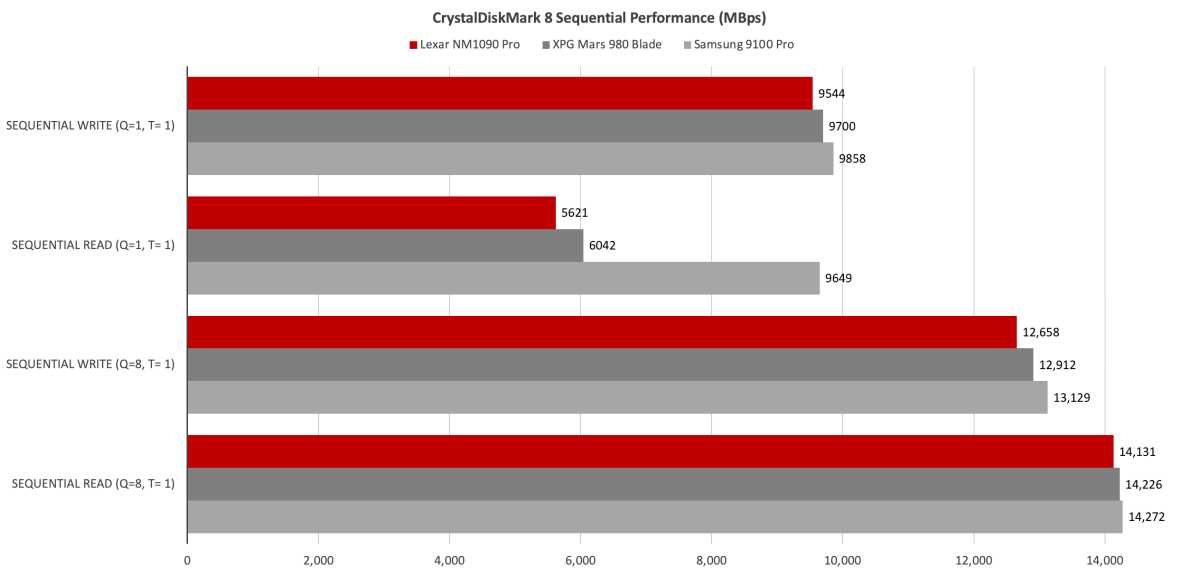
The NM1090 Pro was within shouting distance of the competition in CrystalDiskMark’s random tests. These are still much better 4K results than what you’ll see with PCIe 5.0 HMB (host memory buffer) designs. DRAM helps.
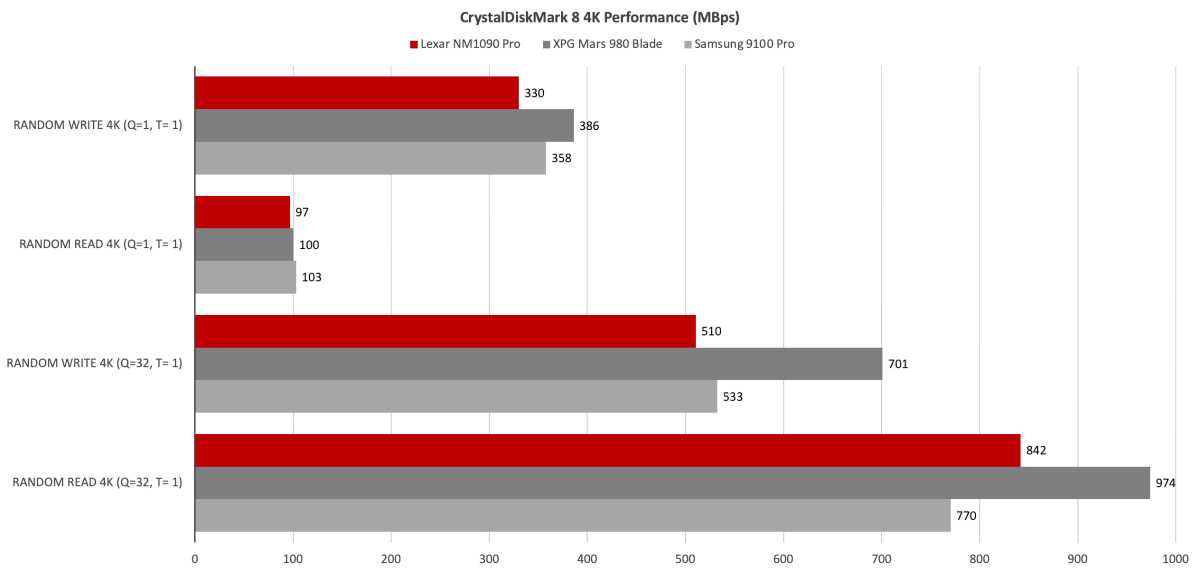
The 48GB transfer time below is the best case scenario — i.e., the fastest time the NM1090 turned in. On several occasions during our first look, the 48GB single file write was far slower.
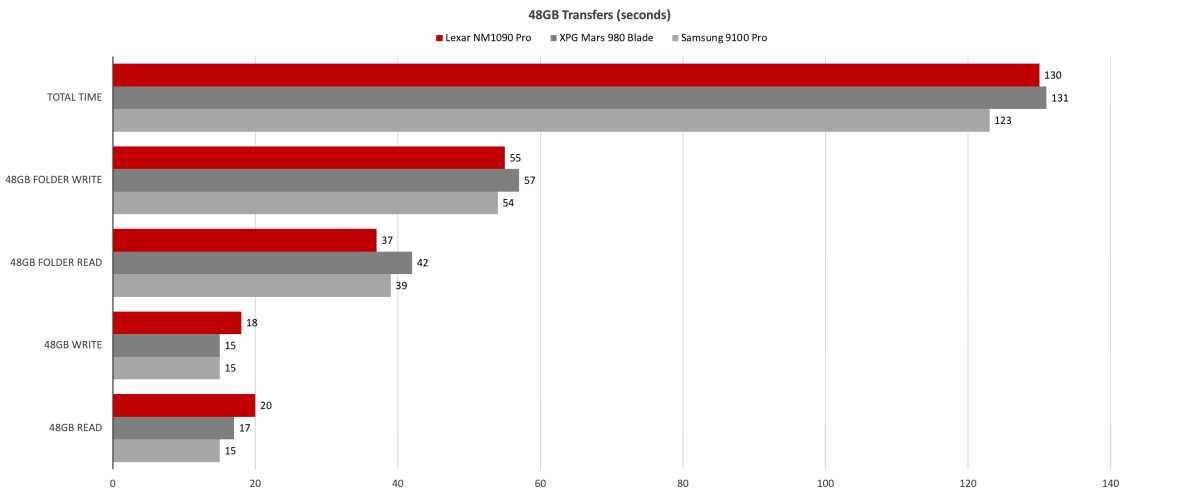
The NM1090 Pro’s 450GB write time caught us off guard. The NM1090 I tested was a 4TB drive and should’ve been far more competitive with the XPG Mars 980 Blade and Samsung 9100 Pro. And this was its fastest performance; other 450GB writes in our first session took almost 4 minutes.
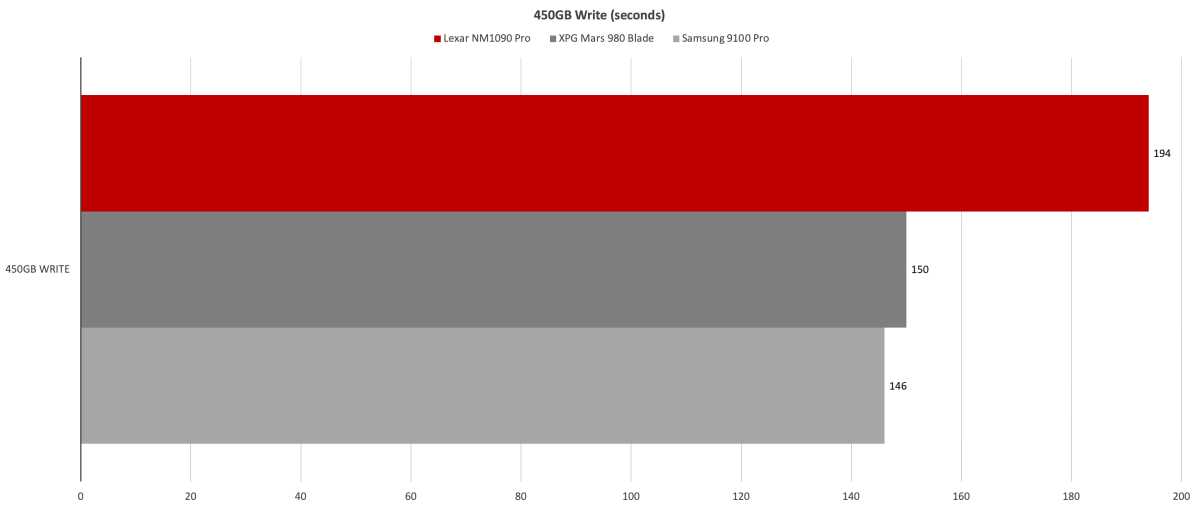
In the end, the NM1090 Pro finished 10th out of the 12 PCIe 5.0/DRAM SSDs I’ve tested. Lest you get the impression that it’s all bad, I should also note that the NM1090 Pro is still 15th fastest overall out of all 58 NVMe SSDs that have sat in our testbed.
Lower tier among its direct peers, but upper tier in the grand scheme things.
Should you buy the Lexar NM1090 Pro?
The NM1090 Pro performed largely as advertised. However, the slowish 450GB write and slightly subpar synthetic benchmark performances place it behind the Samsung 9100 Pro, XPG Mars 980, and many other PCIe 5.0 SSDs on our to-buy list. Still, at the right price…
How we test
Our storage tests currently utilize Windows 11 (22H2) 64-bit running on a Z790 (PCIe 5.0) motherboard/i5-12400 CPU combo with two Kingston Fury 32GB DDR5 modules (64GB of memory total). Intel integrated graphics are used. The 48GB transfer tests utilize an ImDisk RAM disk taking up 58GB of the 64GB total memory. The 450GB file is transferred from a Samsung 990 Pro 2TB, which also contains the operating system.
Each test is performed on a newly formatted and TRIM’d drive so the results are optimal. Note that as any drive fills up, performance will decrease due to less NAND for secondary caching, and other factors.
The performance numbers shown apply only to the drive we were shipped as well as the capacity tested. SSD performance can vary by capacity due to more or fewer chips to read/write across and the amount of NAND available for secondary caching (writing TLC/QLC as SLC). Vendors also occasionally swap components. If you ever notice a large discrepancy between the performance you experience and that which we report (systems being roughly equal), by all means — let us know.
Login to add comment
Other posts in this group

OLED monitors have been the hot ticket for PC gamers for over a year

Microsoft’s support for Windows 10 will expire on October 14th, 2025,
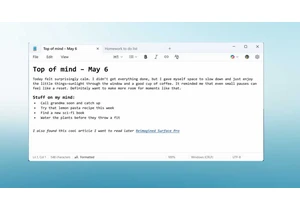
A new version of Notepad for Windows 11 was released with support for
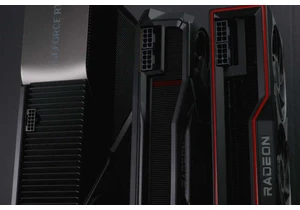
Graphics card pricing sucks, and if you’re looking for any kind of mi
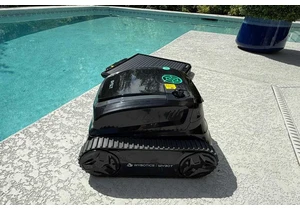

We love finding fantastic monitors at low prices because building a p

